Network Forensic Analysis is a branch of digital forensics that monitors and analyses East-West and North-South network traffic for facilitating information gathering, legal evidence and intrusion detection. The approach aids in unravelling the source of cyberattacks, intrusion path taken by threat actors, type of malware that breached the network perimeter, etc. by analysing raw telemetry data.
Network Forensic Analysis plays a pivotal role in an organization’s incident response mechanism or post-incident investigation. The approach ensures valuable insight following any security incident by analysing telemetry data, event logs, etc and answers questions such as:
How long has the malicious activity been going on?
When did the intrusion begin?
Is the activity still ongoing?
How many systems have been affected?
What data was taken?
Was any sensitive, proprietary, or confidential information taken?
Hence, network forensic analysis is a science that encompasses the discovery and retrieval of information surrounding a cybercrime. In circumstances of network leakage, data theft, or suspicious network traffic, network forensic analysis can be very beneficial. It primarily focuses on the investigation and analysis of traffic in a network suspected of being hacked by cybercriminals (e.g., DDoS attacks or cyber exploitation).
The goal of network forensic analysis is straightforward. When it comes to network attacks, it’s usually employed. It is frequently used to monitor a network in order to detect unusual traffic or an impending assault in advance. On the other hand, it’s utilised to gather evidence by analysing network traffic data in order to pinpoint an attack’s origin.
Network forensic analysis follows the undernoted steps:
- Identifying a security threat or attack.
- Collecting and preserving the evidence.
- Examining the data that has been gathered.
- Analyzing collected data and creating conclusions from that data.
- Presenting the conclusions made.
- Responding to the incident to initiate a clean-up.
Security teams resort to two methods while performing Network Forensic Analysis.
- Catch it if you can- This method involves gathering all network traffic available and analyzing the entirety of it. This can be a tedious process with a large volume of data to sort through.
- Stop, look and listen- This method looks into each data packet on the network but only analyzes those that appear to be suspicious and in need of additional analysis.
Network forensic investigators frequently turn to an intrusion detection system, data collector or packet capture tools to monitor network traffic and extract the data they need.









